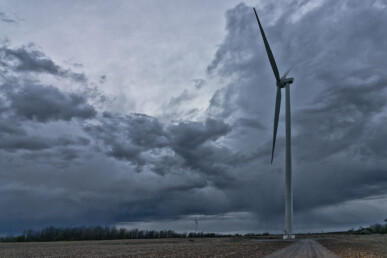More defendants to be named… October 11, 2017 Samsung Energy is reported to have prepared a…


More defendants to be named… October 11, 2017 Samsung Energy is reported to have prepared a…

Here from former CEO of the Ontario Power Authority Jan Carr, is an opinion on cancelling contracts…

“Our water is now contaminated with shale particles and heavy metals,” North Kent resident tells the IESO.…

October 13, 2020 Canada’s federal government–deep in debt from policy decisions and now the COVID-19 pandemic–has pointed…

In a recent article by the Anderson County Review, the conclusion on the non-disclosure clauses or…

Good riddance to toxic Green Energy Act PostMedia September 21, 2018 OPINION By Lorrie Goldstein By…

Ontario Groundwater Association warned about the effects of wind farm development over sensitive hydrogeology — but was…

April 15, 2018 Follow the money … out of Ontario A profile of who’s who in Ontario…

Former oil drilling roughneck now university professor says vibrations such as from pile-driving is well known to affect wells. The MOECC, however, relies on a report from the power developers’ consultant, which says it doesn’t. Choosing what to measure seems key.

Jeffrey Carter
Special to Ontario Farmer
February 20, 2018
Geological engineer Maurice Dusseault wasn’t surprised to hear that Chatham-Kent water wells were contaminated in the wake of pile driving for wind turbines.
“Pile driving emits a lot of low-frequency energy, and it is not at all surprising to me that there could be related groundwater effects. The concept of large-amplitude, low frequency excitation as an aid to liquid flow is reasonably well-known,” the University of Waterloo professor said.
“Low frequency deformation waves are absolutely known to lead to fluctuation in ground water levels as well as changes in the particulate count in shallow groundwater wells.”
In addition, Dusseault said affected residents were well-advised in having their wells baseline tested prior to construction last summer. It’s the type of evaluation he recommends.
Before and after tests sent by the Water Wells First citizens’ group to RTI Laboratories in Michigan show an exponential increase [in] turbidity among the 14 affected wells, including [a] large proportion that can be attributed to Kettle [Point] black shale particles that are known to contain heavy metals, including uranium, arsenic and lead.
That’s not the conclusion reached by the Ministry of the Environment and Climate Change, as outlined in letters recently sent to affected well owners living near the North Kent One project in the northern part of the Municipality of Chatham-Kent.
While there’s been an admission that wells have indeed been contaminated, that contamination can only be attributed to “unidentified factors.”
Pile-driving activities associated with wind turbine development are not to blame, the MOECC maintains.
The MOECC, in coming to its conclusion, relied upon the vibration evaluations prepared for the developers Samsung and Pattern Energy, by Golder Associates Limited. Golder measured changes to particle velocity as a measure of vibration intensity created by pile driving.
“The ministry has reviewed Golder’s assessment and agreed with the conclusion that any pile driving -induced vibrations at your well would have been much lower than those created during common daily activities around the homes,” a letter to one of the affected families states.
The parameters used by Golder, however, may be flawed….

November 12, 2017 Well water problems continue in Chatham-Kent with neither the wind power developer consortium, the…